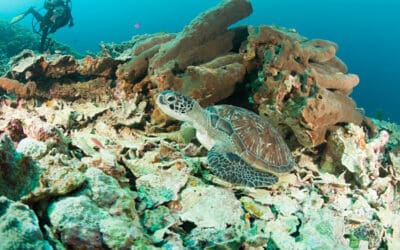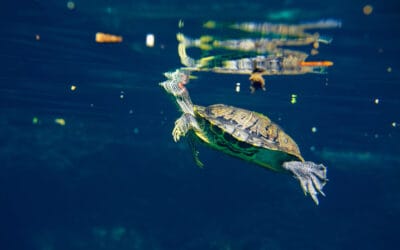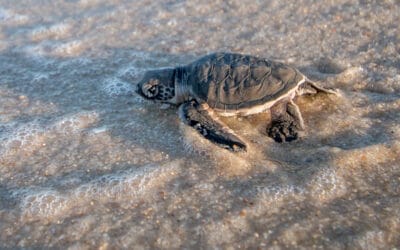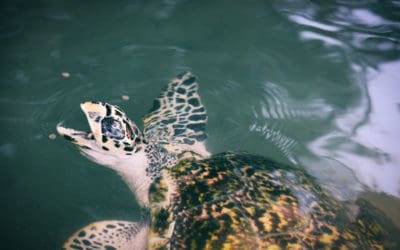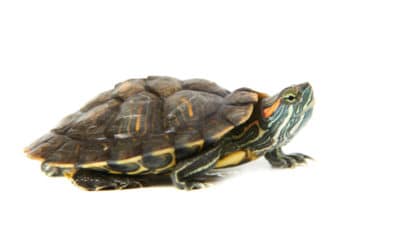A lot of people believe that maritime animals can’t drown simply because they feel like… fish in the sea.
Well, in the case of many reptiles – even the ones that love water – that is not the case. For example, sea turtles and semi-aquatic turtles can definitely drown. It is all due to the fact that they are reptiles and as many other representatives of this animal group, they have lungs. Interestingly, they are quite similar to our own. Obviously, there are quite a lot of differences, since sea turtles can stay underwater for a lot longer than human beings.
However, seeing that turtles can actually drown, it is imperative for you to understand how it can happen, what is the maximum time they can breathe underwater before drowning starts, and, obviously, what to do in order to rescue such a turtle. This article is here to show you the most important things as far as this particular aspect is concerned.
Needless to say I will briefly talk about the signs of your turtle drowning, because not everyone realizes how it actually happens and what it looks like. Moreover, there will be some information related to baby turtles and the frequency of underwater accidents with them.
How come turtles can drown?
But before I delve into a lot of information that may or may not occur to be helpful, let’s start from the basics. How is it possible that turtles, especially aquatic and semi-aquatic ones, can drown? Aren’t these creatures perfectly adjusted to stay underwater for quite a long time? Well, that is surely a correct statement. However, just like crocodiles, turtles need to breathe to stay alive.
That is why even if they are perfectly capable of diving and staying below the surface of water for dozens of minutes, it doesn’t mean they can do that without any breaks. In the case of turtles, they hold their breath and are quite great at this. Sadly, turtle drownings are most often the result of the third party involvement.
It can be caused by a deliberate action (for example poaching for turtles in the wild) or by ill-considered actions humans do. By that I mean fishing nets, trash and waste that is in the water, or simply a number of different objects that are found there. Even in the case of pet turtles there are documented cases of drownings.
Obviously, we have to remember that usually turtles are great at staying underwater. If the turtle’s activity is relatively low, then it is possible they can hold their breath for up to 6-7 hours. Turtles also hibernate in water and, when they do that, the entire breathing process changes and, since they change the breathing process, it is possible to stay underwater for months.
The biggest problem of turtles underwater is, obviously, panicking when something (or someone) is not letting them resurface. As a result, they begin to use the oxygen they stored in very rapidly. This results in a quick shortage of air and, therefore, leads to troubles with breathing. In such a situation, turtles tend to begin to swallow water (do turtles drink a water ?) in order to collect small amounts of oxygen. Later on, this translates into a number of troubles that will very quickly lead to death.
What is the maximum time the turtle can breathe underwater before it drowns?
As it was already mentioned, usually the turtles are capable of breathing up to 6-7 hours underwater. Obviously, these numbers will vary greatly from one species to another, from the size of the turtle, its age, and many other factors. Usually, the turtles that are younger will be able to hold up significantly less.
Obviously, the numbers presented by me were documented an abundance of times by professional researchers, so this is not something I came up with by myself. Nor did I try finding out the real answer on my own turtle.
When panic comes into play, the time significantly shortens. It means that within several minutes a turtle can use most of its stored air and begin to suffocate. After a moment, they begin to drown. This process; however, is not as quick as in the case of human beings or other animals.
Even if our reptile looks like it died from drowning, there is still a chance to help it. You see, turtles can stay alive up to even 12 hours after drowning. It is all possible because of their body system that basically shuts down in order to preserve the body. Therefore, even if we notice something’s wrong with our turtle, it is possible to save the pet.
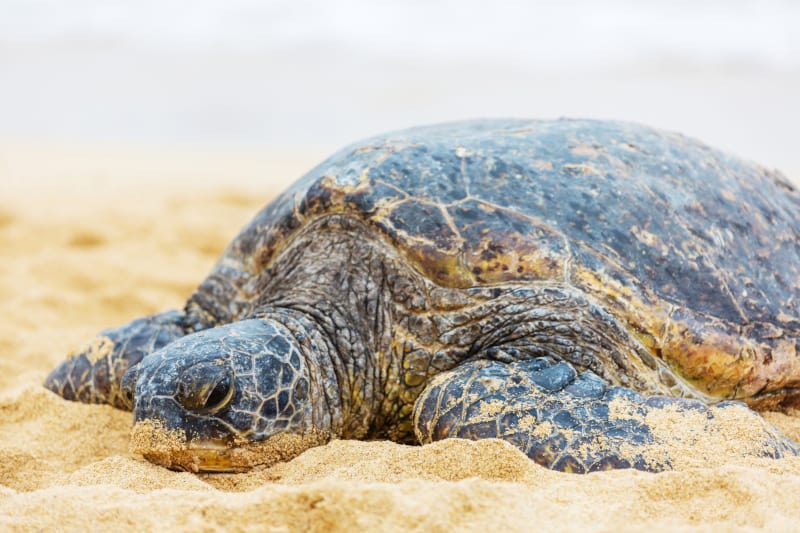
What to do when we notice our turtle is drowning? Is it possible to revive a drowned turtle?
The first thing to remember is that the turtle that appears to have drowned doesn’t really have to be dead. In most cases, if it happens in the last 8-12 hours, it is still alive – just unconscious or struggling for air. Their metabolism is very slow and, therefore, there is a high probability that they will still be alive. There are; however, several things we have to do in order to “bring it back to live”. The first thing to remember is that a turtle should never be put on its back in these situations. If we flip it, we most likely get rid of the last parts of air it had left in its lungs.
This is the list of things you should do in order to help your turtle after drowning:
- Take the turtle out of the tank and keep its head pointed down.
- Grab it by the head – right behind its ears and pull it like you were trying to extend its neck.
- Use the second hand to grab it by the tail. Pull it up while keeping the head down.
- Now all the water should leave the turtle’s body. Once it is done, put it on a flat surface.
- Grab the turtle by its front legs and pull them towards you. Then, push them back. This movement should help lungs in pumping the air. Repeat it several times and then proceed to the rear legs with the same technique.
Obviously, these tips and a step by step guide should be taken into account only while there are preparations to go to the vet in order for the professional to have a look at it. Even if the tips helped the turtle breathe, I still advise going to the nearest veterinarian in order to see if everything is okay.
Drowning of baby turtles
Sadly, baby turtles are the ones that have the highest frequency of drowning. It is mainly because of age, because their body is not yet accustomed to holding greater amounts of air. Furthermore, we have to remember that baby turtles are inexperienced. As a result, they are not aware of their true potential and the things they can or cannot do.
Obviously, we need to remember that another reason why babies can drown is because of the size of the tank. Deep water is not favorable for baby turtles because they will simply find it more difficult to go back to the surface to get oxygen. So, if you put a lot of water into the tank, then the moment they get tired of swimming, they may simply drown.
Another factor that contributes to a higher drowning ratio in the case of baby turtles is the fact that they can get stuck under an item or any kind like, for example, rock, driftwood, plant, or any other tank decoration. Let’s also not forget about the fact that flipping over near the water is also a very dangerous thing and, as you can guess, juvenile turtles tend to flip over more often because of their inexperience.
What to do to prevent your turtle from drowning?
In the case of pet turtles, there are quite a lot of different methods that help you prevent eventual drowning. Obviously, most of these things regard the appropriate preparation of the tank. Therefore, we need to remember about the following things before we place the baby turtle into our container:
Don’t overdo it with water
Even if you purchased a tank that is perfectly suitable for your turtle, you probably prepared it for the mature reptile. It basically means you don’t have to put the same amount of water into the tank as in the case of mature turtles. The best way to prepare the appropriate volume is to look at the size of the tank and put at least 10 to 15 gallons of water for every inch (2.5 cm) of your pet.
Don’t overdo it with decorations
Another important thing is to look at the decorations and don’t include the ones that can be potential threats for your turtle. Basically, avoid all the plants and decors that have a number of different attachments and additions that make it easy for turtles to get tangled up.
Inappropriate basking dock
If we prepare a basking dock, which is a place where our turtle can go and “catch some sun”, then it may be unable to climb it.
Submit your review | |

